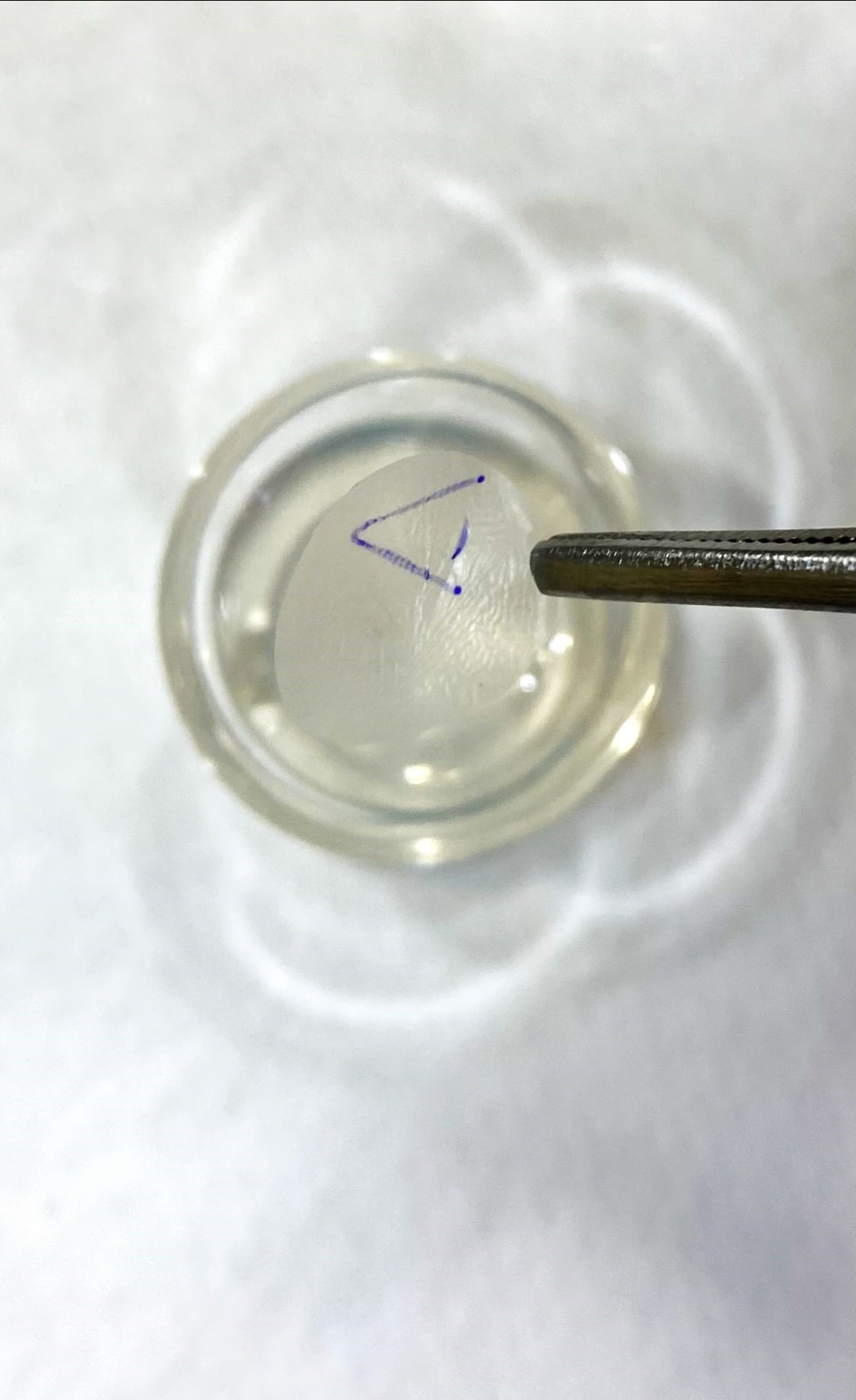
The treatment guidelines set in 2017 (TFOS DEWS II), suggest the use of amniotic membranes for the severe stages of dry eye disease.
During pregnancy, the amniotic membrane acts as a physical barrier between the mother and baby, preventing the maternal immune responses and inflammatory cell infiltration that could harm the baby. This immuno-regulatory property of amniotic membrane is believed to also protect against tissue rejection and inflammation and nurture the healing process.
Due to the properties that the amniotic has, this treatment has been used in the past to alleviate pain, control inflammation, help heal the surface of the eye, avoiding or diminishing the risk of scarring and formation of new blood vessels.
A study at Aston University used dried amniotic membrane discs, held under a special soft contact lens on patients with moderate to severe dry eye. On their first study they have found, that application of the amniotic membrane twice, for 4-5 days at a time, could:
1. Reduce dry eye symptomatology by 31 to 42% by month post-treatment.
2. Reduce the mechanical stress between the eye and the eyelid (a common sign for dry eye disease) by 38% at 1 month post-treatment.
This innovative treatment can be given to both eyes at the time, due to having a window that allows for reasonable vision while treating the surface of the eye in patients with moderate-to-severe dry eye disease.
However, it is not comfortable for all patients. More information can be found at https://www.dovepress.com/bilateral-sutureless-application-of-human-dehydrated-amniotic-membrane-peer-reviewed-fulltext-article-OPTH


